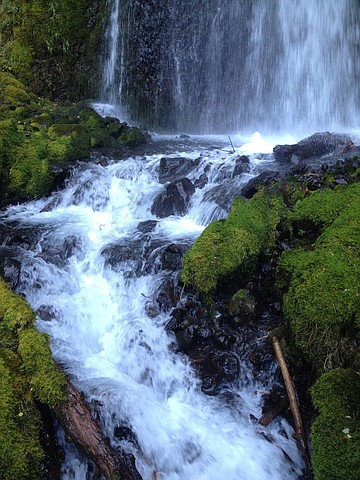 Facebook
Facebook
 X
X
 Instagram
Instagram
 TikTok
TikTok
 Youtube
Youtube

About an hour's drive outside of Portland, in the early morning sunrise, I had the pleasure of experiencing some of Northern Oregon’s most beautiful sights.
When in Oregon, it's hard not to want to interact with nature, so I set off for the Cascade Mountains, home to the state's tallest year-round waterfall. At dusk, I found myself looking at moss-covered Western Redcedar trees, once used by the Indians for canoes and totem poles. The Western Redcedars are in abundance throughout the Cascades.
Not deterred by the falling rock warning signs or the threat of rain, visitors come by car, bus, bike and foot to take in the beauty of Multnomah Falls. Two and a half million visitors see this natural attraction each year.
Even on this rare clear day, I missed most of the crowds by arriving early – a surreal time to hear, smell and see the colorful Oregon forest. By the time I left, the busloads of people were arriving.
An easy, flat, paved ½-mile trail puts you on top of the pedestrian bridge, an excellent vantage point for postcard-quality pictures. The bridge, constructed in 1915, is at the top of the lower falls. Here you're surrounded by flowing waters and green, majestic trees.

If you quest for a closer view, hike another ¾ mile up the trail to the top of the falls. Lower Falls is 69 feet high and Upper Falls is 542 feet. The lodge at the base of the falls dates back to 1925, and now houses an exhibit showcasing the history and geology of the area.
A half-mile before you reach the parking lot for Multnomah is Wahkeena Falls, an appetizer for what’s to come. Just a five-minute walk gets you to a good view of these picturesque falls.
Flowing over snow and ice in winter, moss and slick rocks in spring and summer, the state's number-one natural attraction – while not as famous as the not-too-far-away Yosemite Falls – is a must-do and -see while in Oregon.


About an hour's drive outside of Portland, in the early morning sunrise, I had the pleasure of experiencing some of Northern Oregon’s most beautiful sights.
When in Oregon, it's hard not to want to interact with nature, so I set off for the Cascade Mountains, home to the state's tallest year-round waterfall. At dusk, I found myself looking at moss-covered Western Redcedar trees, once used by the Indians for canoes and totem poles. The Western Redcedars are in abundance throughout the Cascades.
Not deterred by the falling rock warning signs or the threat of rain, visitors come by car, bus, bike and foot to take in the beauty of Multnomah Falls. Two and a half million visitors see this natural attraction each year.
Even on this rare clear day, I missed most of the crowds by arriving early – a surreal time to hear, smell and see the colorful Oregon forest. By the time I left, the busloads of people were arriving.
An easy, flat, paved ½-mile trail puts you on top of the pedestrian bridge, an excellent vantage point for postcard-quality pictures. The bridge, constructed in 1915, is at the top of the lower falls. Here you're surrounded by flowing waters and green, majestic trees.

If you quest for a closer view, hike another ¾ mile up the trail to the top of the falls. Lower Falls is 69 feet high and Upper Falls is 542 feet. The lodge at the base of the falls dates back to 1925, and now houses an exhibit showcasing the history and geology of the area.
A half-mile before you reach the parking lot for Multnomah is Wahkeena Falls, an appetizer for what’s to come. Just a five-minute walk gets you to a good view of these picturesque falls.
Flowing over snow and ice in winter, moss and slick rocks in spring and summer, the state's number-one natural attraction – while not as famous as the not-too-far-away Yosemite Falls – is a must-do and -see while in Oregon.
Comments